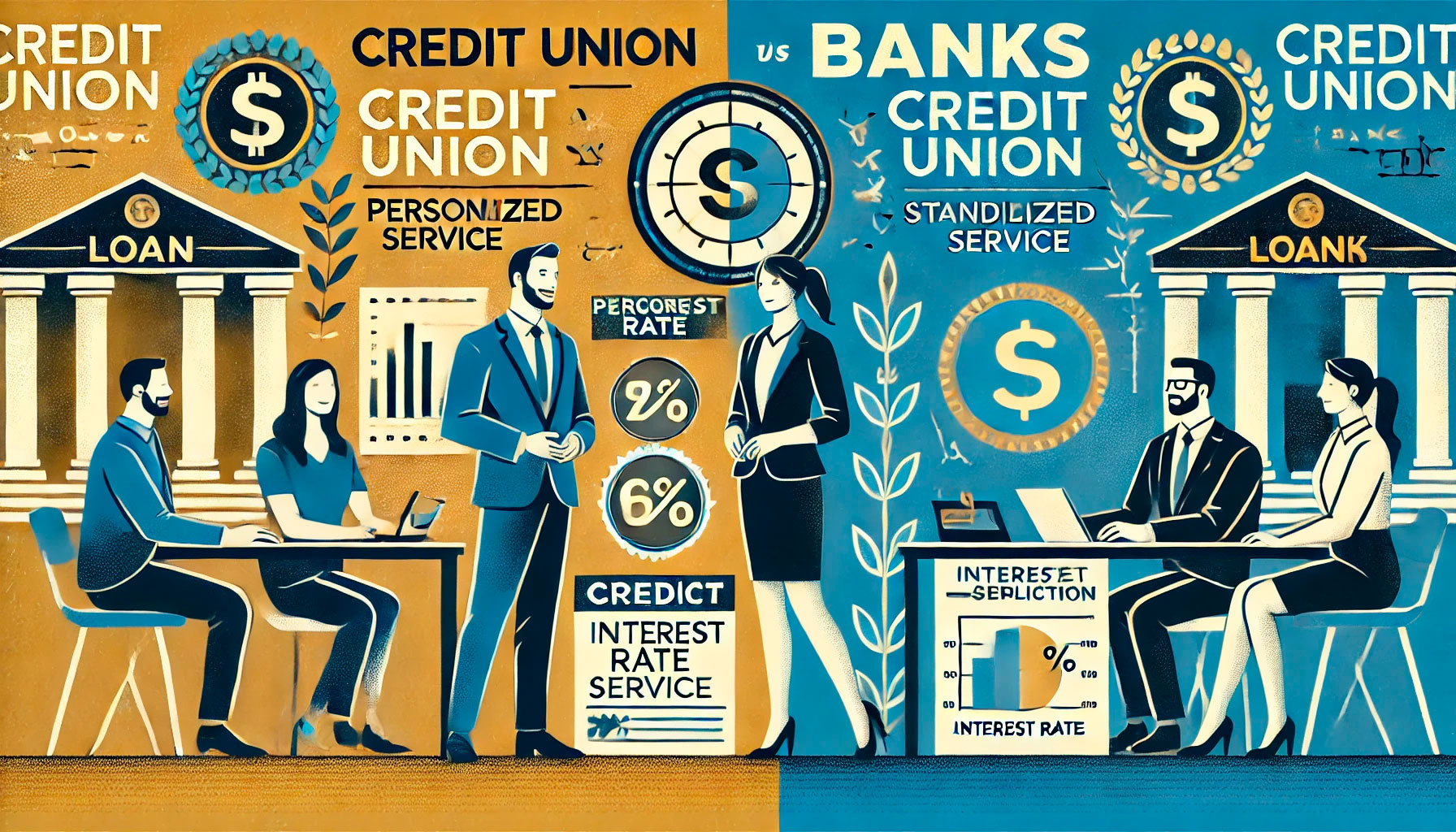Credit unions have long been an alternative to traditional banks for individuals seeking financial products such as savings accounts, mortgages, and personal loans. While banks dominate the lending market in terms of volume, credit unions have carved out a significant niche for themselves by offering competitive lending terms, personalized customer service, and a member-focused approach. In this article, we will explore how credit unions compete with banks in the lending market, the unique advantages they offer, and how they differentiate themselves to attract borrowers.
Member-Focused Approach vs. Profit-Driven Model
One of the fundamental differences between credit unions and banks lies in their organizational structure and mission. Banks are profit-driven entities, focused on maximizing shareholder value, whereas credit unions are non-profit institutions that prioritize the interests of their members. This member-focused approach allows credit unions to offer more favorable lending terms, such as lower interest rates and fewer fees, compared to traditional banks.
Because credit unions are not beholden to shareholders, they can reinvest their profits back into the institution and provide benefits to their members, including competitive loan products. This often results in more affordable loans with better terms, making credit unions a more attractive option for many borrowers. In contrast, banks may charge higher fees and interest rates on loans in order to generate profits for their shareholders.
Competitive Interest Rates and Lower Fees
Credit unions are able to offer some of the most competitive interest rates in the lending market, particularly for products like personal loans, auto loans, and mortgages. The non-profit status of credit unions allows them to operate with lower overhead costs, which they can pass on to their members in the form of lower interest rates and reduced fees. As a result, borrowers often find that credit unions can offer loan products at rates that are more favorable than those provided by banks.
Additionally, credit unions tend to have fewer and lower fees compared to banks. For example, credit unions are less likely to charge high loan origination fees, late payment penalties, or annual fees for credit cards. This makes borrowing from a credit union an appealing option for individuals looking to minimize the costs associated with loans and credit products. While banks may offer similar products, the fees and interest rates can often be higher, making credit unions a more cost-effective choice for many borrowers.
Personalized Customer Service and Lending Flexibility
Another way credit unions compete with banks in the lending market is through their commitment to personalized customer service. Credit unions are typically smaller than banks and tend to have a more community-oriented approach. This allows them to develop closer relationships with their members, understand their individual financial needs, and offer customized lending solutions. In contrast, banks often rely on automated systems and may have a more impersonal, one-size-fits-all approach to lending.
The personalized service provided by credit unions extends to their lending practices. Credit unions are often more flexible when it comes to approving loans, especially for individuals with less-than-perfect credit. While banks may have rigid approval criteria and rely heavily on credit scores, credit unions may take a more holistic approach, considering factors such as a borrower’s overall financial situation, history with the credit union, and potential for future financial growth. This flexibility can be particularly beneficial for borrowers who may not meet the strict requirements set by traditional banks.

Loan Products Tailored to Local Communities
Credit unions are often deeply embedded in the communities they serve, and they tailor their loan products to meet the specific needs of local residents. For example, credit unions may offer specialized home loan products for first-time homebuyers, or they may provide loans for local businesses looking to expand. In many cases, credit unions will prioritize community-focused lending, supporting local economic growth and ensuring that their members have access to credit that aligns with their personal and business goals.
In contrast, banks tend to have a more standardized approach to lending, offering similar loan products across a wide geographic area. While this allows banks to reach a larger pool of potential borrowers, they may not always offer the same level of localized service or customize their products to meet the unique needs of specific communities. This is where credit unions have an edge—they are able to provide more specialized and community-oriented loan products that are often more relevant to their members’ needs.
Access to Financial Education and Resources
Credit unions also compete with banks by providing borrowers with additional resources and financial education. Many credit unions offer financial literacy programs, workshops, and one-on-one counseling to help members improve their credit scores, manage debt, and make informed borrowing decisions. These resources are designed to empower members to make smart financial choices and improve their overall financial well-being, which can lead to better loan outcomes for both the borrower and the credit union.
While banks may also offer financial education resources, credit unions typically place a stronger emphasis on this aspect of their services. By helping borrowers improve their financial literacy, credit unions ensure that their members are more likely to successfully manage their loans and build strong credit histories. This mutually beneficial relationship fosters long-term loyalty and helps credit unions build a stable base of borrowers.
Access to Technology and Digital Services
In recent years, credit unions have made significant investments in technology and digital services to compete with banks in the modern lending market. Many credit unions now offer online loan applications, mobile banking apps, and digital account management tools that make it easier for members to apply for loans, manage their finances, and access credit. These digital services help credit unions stay competitive in an increasingly tech-driven financial landscape.
While traditional banks have a head start when it comes to technology and digital infrastructure, credit unions have made great strides in providing online loan applications and other digital resources. For example, many credit unions now offer the ability to apply for personal loans, auto loans, and mortgages entirely online, streamlining the application process and making borrowing more convenient for members. This technological advancement has allowed credit unions to expand their reach and better compete with the digital offerings of traditional banks.
Credit unions have long been an attractive alternative to banks for consumers looking for favorable loan terms, personalized service, and competitive interest rates. By offering lower interest rates, fewer fees, and more flexible lending criteria, credit unions can provide significant advantages to borrowers, particularly those with unique financial situations. In addition, their strong focus on community, personalized service, and financial education further sets them apart from traditional banks. As credit unions continue to embrace technology and expand their digital offerings, they are well-positioned to remain a strong competitor in the lending market, offering consumers more choices and better loan products.




